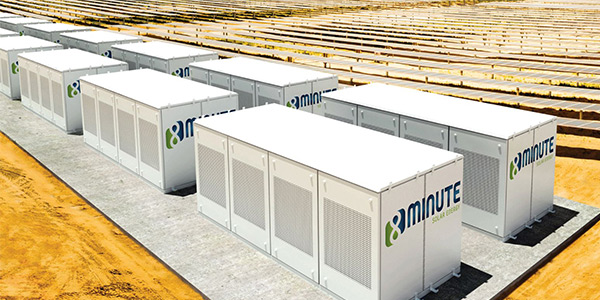NYISO is nearing a vote on market participation rules for hybrid storage and generation resources, with plans to submit the proposal to FERC in 2021.
Stakeholders on Wednesday spent more than three hours discussing proposed Tariff language on co-located, front-of-the-meter energy storage and wind or solar generation.
The ISO’s proposal would allow each unit in a co-located storage resource (CSR) to have its own single point identifier — one for the energy storage resource (ESR), and one for the wind or solar generator, referred to as an intermittent power resource. Each unit also would have separate energy resource interconnection service (ERIS) and capacity resource interconnection service (CRIS) values.
The CSR units would be settled at the locational-based marginal price at the point of interconnection. Only the ESR unit would be eligible to provide reserves or regulation.
The ISO, which has held seven prior meetings since beginning the hybrid storage project in January, had considered two other participation options in May but decided not to propose them. (See NYISO Explores Hybrid Interconnection Processes.)
NYISO will use a scheduling constraint to determine feasible energy and reserve schedules for units within the CSR, the ISO’s Kanchan Upadhyay told stakeholders during a joint meeting of the Market Issues, Installed Capacity and Price Responsive Load working groups.
Resources serving a host load would not be permitted to participate in ISO markets as a CSR. The ISO initially proposed requiring them to participate as a behind-the-meter net generation resource or a distributed energy resource, but officials are reconsidering that based on stakeholder feedback at Wednesday’s meeting.
The ISO’s Amanda Myott led a discussion on proposed Tariff revisions governing CRIS for hybrid generation and storage.
The ERIS for the intermittent generator would be limited to the CSR injection capability plus the full withdrawal capability of the storage resource.
Under proposed transition rules, projects with separate positions in the interconnection queue as of the effective date of the Tariff changes could combine and proceed under a single interconnection request as a CSR as long as both projects are behind the same point of injection.
Sarah Carkner gave a presentation on proposed ESR bidding rules for installed capacity (ICAP) suppliers with an energy-duration limitation.
The ISO originally proposed requiring that ESR ICAP suppliers use the ISO-managed energy level bidding parameter for their day-ahead bids.
FERC, however, said the proposal did not comply with Order 841’s requirement “to allow resources using the participation model for electric storage resources to self-manage their state of charge.” It ordered NYISO to allow ESRs that supply capacity to bid either ISO-managed or self-managed.
Earlier this year, FERC approved NYISO’s proposal to require the ESR ICAP supplier to bid, schedule and notify the ISO of its full range, from withdrawal to injection. (See NYISO’s 2nd Storage Compliance Almost Hits Mark.)
NYISO proposes requiring ESR ICAP suppliers with an energy-duration limitation to either bid or schedule a bilateral transaction for their full injection range for all hours during the “peak load window,” or notify the ISO of a derate. For hours outside of the peak load window, they would be required to bid their full withdrawal range or notify the ISO of a derate. (The peak load window is between the hours beginning 13-18 in summer and 16-21 in winter. When the system reaches 1,000 MW of duration-limited resources, the window will increase from six to eight hours.)
The ISO plans to bring the new bidding rules for ESR ICAP suppliers with an energy-duration limitation to upcoming meetings of the Business Issues and Management committees and have them effective for the day-ahead market run for May 1, 2021.





